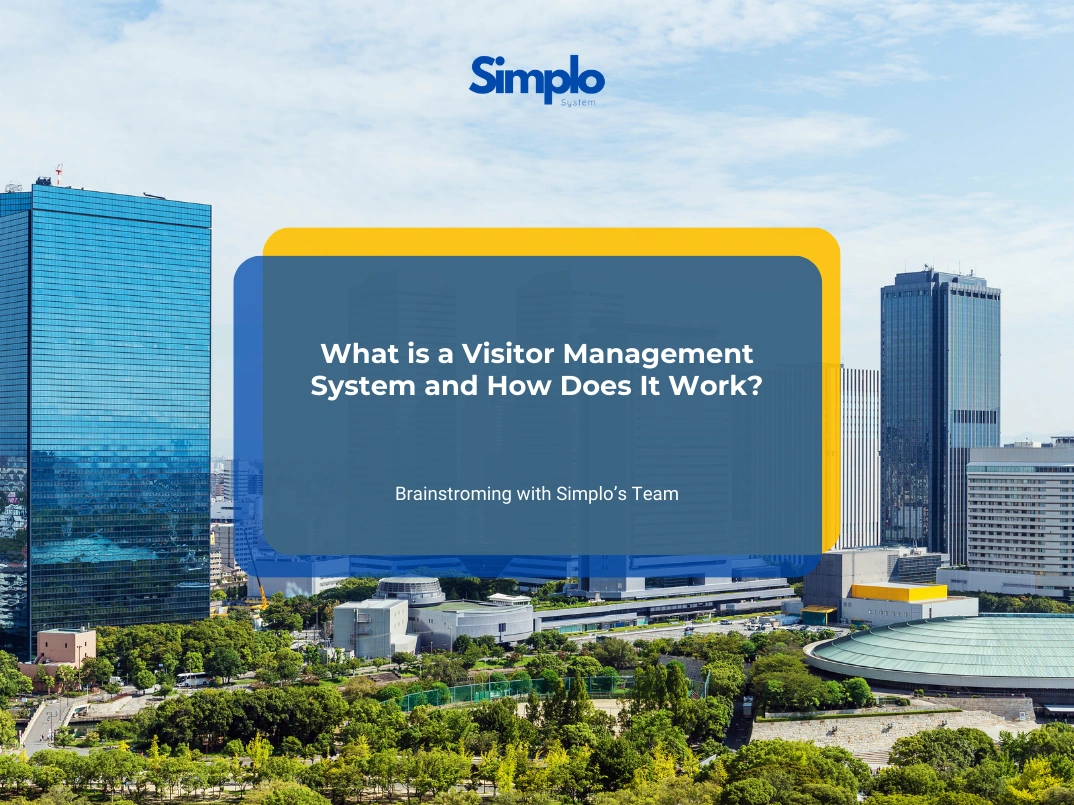Berita dan Artikel
15 August 2025
What is a Visitor Management System and How Does It Work?

Discover how a Visitor Management System in Indonesia can improve security, compliance, and visitor experience for your building.
In today’s fast-paced business environment, managing visitors effectively is more than just signing a logbook. In Indonesia, where office buildings, factories, and residential complexes are constantly welcoming guests, vendors, and contractors, a Visitor Management System (VMS) has become an essential tool for both security and operational efficiency.
What is a Visitor Management System?
A Visitor Management System is a digital solution designed to register, track, and manage guests entering your premises. Instead of relying on manual logbooks, the system captures visitor data, verifies identity, issues access credentials, and records entry and exit times — all in a secure and centralized platform.
Example in Indonesia:
In Jakarta’s high-rise offices, many companies have switched from paper sign-ins to digital VMS to comply with building security standards and Indonesian data protection regulations (UU Perlindungan Data Pribadi).
Key Features of a Visitor Management System in Indonesia
-
Digital Pre-Registration
Guests can register online before arrival, reducing lobby congestion. -
ID & QR Code Check-In
Integrates with scanners for KTP, passports, or QR codes. -
Access Control Integration
Works with door access systems like Suprema, ZKTeco, or Entrypass. -
Real-Time Visitor Tracking
Security teams can monitor visitor movement inside the building. -
Emergency Muster Zone Reports
Quickly identify visitors during evacuation or emergency. -
Customizable Compliance Forms
Ideal for factories that require safety briefings or NDAs before entry.
How Does a Visitor Management System Work?
Here’s a simple flow:
-
Pre-Arrival – The host sends a pre-registration link to the visitor.
-
Arrival – Visitor scans ID/QR code at the reception kiosk.
-
Verification – Security verifies the data and issues a temporary pass.
-
Access Granted – System communicates with access control to unlock permitted areas.
-
Exit & Record – Upon leaving, the pass is scanned out and the visit is logged automatically.
Why Businesses in Indonesia Need a VMS
-
Enhanced Security: Prevent unauthorized access and maintain accurate records.
-
Regulatory Compliance: Align with Indonesia’s building and data protection laws.
-
Better Visitor Experience: Reduce waiting times and provide a professional first impression.
-
Data Insights: Analyze visitor trends for operational improvements.
Integrating VMS with Other Systems
Modern platforms like Simplo go beyond basic VMS by integrating:
-
CCTV & Access Control → For complete security visibility.
-
ERP & Maintenance Systems → Link visitor activities with operational data.
-
Mobile Apps → For quick check-in and instant host notifications.
A Visitor Management System in Indonesia is no longer optional — it’s a core part of building security and guest experience. Whether you manage an office tower in Jakarta, a manufacturing plant in Bekasi, or an apartment complex in Surabaya, investing in a modern VMS will help you stay secure, compliant, and efficient. Interest with VMS? Just Simplo-it!
Pro Tip: When choosing a VMS, ensure it supports Bahasa Indonesia, integrates with your existing security systems, and meets local compliance standards.
Suggested Internal Links:
-
How to Integrate Visitor Management with Access Control in Indonesia
-
Top 5 Security Trends in Indonesia for 2025
-
Simplo: The One Platform ERP for Security and Operations